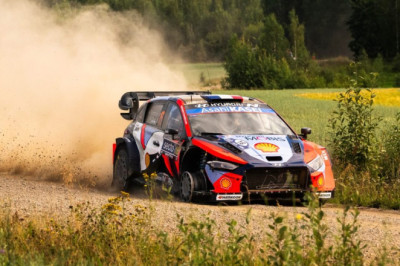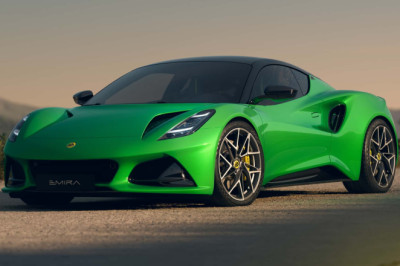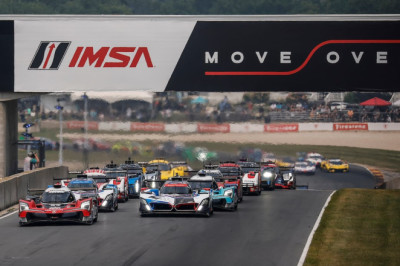
The Circuit de la Sarthe, measuring approximately 13.6 kilometers, presented a challenging mix of long straights, intricate chicanes, and sweeping corners, demanding exceptional car control and precise navigation. The race attracted top manufacturers and privateer teams from around the world, all vying for glory in one of motorsport's most prestigious events.
In 1970, the battle for victory unfolded between formidable contenders, including Porsche, Ferrari, and Gulf-Wyer Ford. Porsche fielded their renowned Porsche 917, a powerful and aerodynamically advanced prototype race car, while Ferrari entered their formidable Ferrari 512S. The Gulf-Wyer Ford team, supported by the iconic blue and orange livery, added an extra dimension to the fierce competition.
The race itself spanned a grueling 24-hour period, testing the limits of both drivers and machines. Teams relied on meticulous planning, flawless pit stops, and strategic driver rotations to maximize their chances of success. Endurance racing demands not only speed but also reliability and fuel efficiency, making strategic decisions and mechanical durability crucial factors in determining the final outcome.
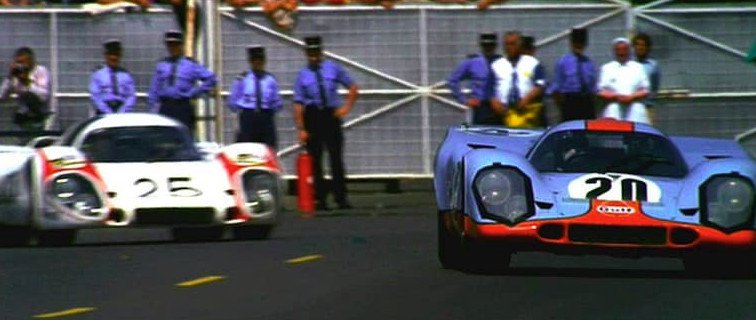
Le Mans 1970 witnessed an unforgettable and epic battle between two automotive powerhouses: the Porsche 917 and the Ferrari 512S. The rivalry between these two manufacturers ignited the race, setting the stage for one of the most thrilling and dramatic contests in Le Mans history.
As the race began, the Porsche 917s and Ferrari 512Ss immediately showcased their exceptional performance capabilities, captivating both the drivers and the spectators. The track became a stage for intense wheel-to-wheel duels and adrenaline-fueled battles as the drivers pushed their cars to the absolute limit.
Throughout the 24 hours of racing, the lead changed hands multiple times, with each team strategizing and executing tactical overtakes to gain an advantage. The sheer determination and skill displayed by the drivers were awe-inspiring, leaving the spectators on the edge of their seats.
The Porsche 917, known for its raw power and exceptional aerodynamics, showcased its dominance on the long straights of the Circuit de la Sarthe. Meanwhile, the Ferrari 512S, with its sleek design and powerful engine, demonstrated remarkable cornering abilities and unmatched agility.
The battle between Porsche and Ferrari was not only about speed and performance but also about engineering prowess and endurance. Both manufacturers had invested significant resources and expertise in developing their respective cars, aiming to claim victory at the prestigious Le Mans race.
As the race progressed, the determination and sportsmanship of the drivers became evident. They skillfully maneuvered through traffic, navigated treacherous corners, and executed precise pit stops. The teams worked tirelessly to optimize their strategy, ensuring a balance between speed, fuel efficiency, and driver stints.
The captivating moments of the race included heart-stopping overtakes, daring maneuvers, and the sheer determination of the drivers to secure their place in Le Mans history. The battle between the Porsche 917 and the Ferrari 512S intensified with each passing hour, raising the stakes and electrifying the atmosphere.
Spectators were treated to a spectacle of racing prowess, witnessing the top contenders pushing their cars and themselves to the absolute limits of endurance. The passion and dedication displayed by the drivers and the teams were commendable, as they navigated through the challenges posed by the grueling Le Mans circuit.
In the end, it was the Porsche 917 that emerged victorious, securing an iconic win for the manufacturer. However, the battle between Porsche and Ferrari at Le Mans 1970 will forever be etched in the annals of motorsport history as a testament to the indomitable spirit of competition and the pursuit of excellence.
The race not only showcased the technological advancements and performance capabilities of these legendary cars but also highlighted the skill and bravery of the drivers who took on the challenge. Le Mans 1970 stands as a testament to the enduring allure of endurance racing and the exhilarating moments that define the sport.
Decades later, the memory of the captivating battle between the Porsche 917 and the Ferrari 512S continues to resonate with motorsport enthusiasts worldwide, serving as a reminder of the legendary clashes and the unwavering pursuit of victory at the 24 Hours of Le Mans.

Tragically, the Le Mans 1970 race was marred by a fatal accident that claimed the life of driver John Woolfe. Woolfe, driving the JW Automotive Gulf-Porsche 917, was involved in a crash during the first lap of the race. The incident served as a grim reminder of the inherent dangers faced by drivers in high-speed racing.
The accident underscored the risks associated with pushing the limits of speed and performance on the demanding Circuit de la Sarthe. It prompted a reevaluation of safety measures and led to significant improvements in driver protection in subsequent races and motorsport events.
Following the incident, race organizers and automobile manufacturers focused their efforts on enhancing safety standards and implementing new measures to mitigate the risks faced by drivers. This tragic event acted as a catalyst for change, prompting a comprehensive review of safety protocols and the introduction of advancements in vehicle design, track infrastructure, and driver equipment.
In the wake of the accident, significant improvements were made to enhance driver safety. These included the development and implementation of safety barriers, improved trackside medical facilities, and the introduction of more stringent safety regulations. Additionally, advancements in driver protection systems such as reinforced cockpits, safety harnesses, and helmets were made to minimize the impact of potential accidents.
The incident involving John Woolfe was a turning point in motorsport safety, leading to a renewed commitment to prioritizing driver well-being. The tragic loss of Woolfe's life served as a reminder of the risks that drivers face every time they step into the cockpit, and it galvanized the motorsport community to continuously strive for enhanced safety standards.
Since Le Mans 1970, safety has remained a paramount concern in motorsport, with ongoing efforts to further improve track safety, driver protection, and medical response capabilities. The tragedy served as a catalyst for constant innovation and development in safety technologies, ensuring that drivers are better protected in the event of an accident.
While the loss of John Woolfe was a devastating reminder of the dangers inherent in racing, it sparked a renewed commitment to safety and propelled the motorsport industry forward in its pursuit of reducing risks and ensuring the well-being of competitors. Today, the legacy of this tragic event serves as a reminder of the importance of continuous improvement in motorsport safety, as the sport strives to provide an environment where drivers can compete at high speeds while minimizing the potential for accidents and their tragic consequences.
Le Mans 1970 holds a significant place in the history of the race, representing a pivotal moment in motorsport. The fierce competition, unforgettable battles, and enduring rivalries continue to be celebrated and remembered by fans and enthusiasts. The event showcased the relentless pursuit of victory and the enduring spirit of endurance racing, leaving an indelible mark on the motorsport community.
Today, Le Mans remains one of the most prestigious and revered races in the world, attracting top manufacturers, teams, and drivers who strive to etch their names in the annals of motorsport history. Le Mans 1970 stands as a testament to the resilience, skill, and passion of those who participate, and its legacy continues to inspire generations of racing enthusiasts worldwide.
10 questions and answers about the Le Mans 24 Hours race:
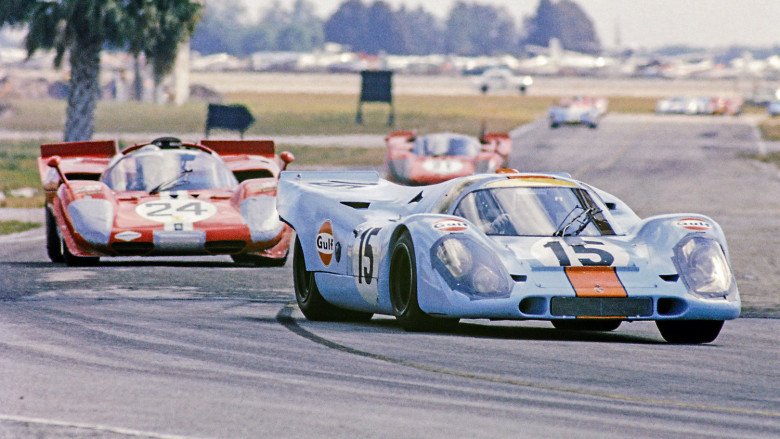
-
When was the first Le Mans 24 Hours race held?
- The first Le Mans 24 Hours race was held on May 26-27, 1923.
-
Where is the Le Mans circuit located?
- The Le Mans circuit, also known as the Circuit de la Sarthe, is located near the city of Le Mans in the Pays de la Loire region of France.
-
How long is the Le Mans 24 Hours race?
- The Le Mans 24 Hours race covers a distance of approximately 5,000 kilometers (3,100 miles).
-
How many times has the race been won by the same driver?
- The record for the most Le Mans victories by a single driver is nine, held by Tom Kristensen of Denmark.
-
Which manufacturer holds the record for the most overall wins?
- Porsche holds the record for the most overall wins at Le Mans with 19 victories.
-
What is the significance of the "Le Mans start"?
- The "Le Mans start" was a traditional starting method used until 1970, where drivers would run across the track to their cars and start the race by turning the ignition.
-
How many different classes of cars participate in the Le Mans 24 Hours race?
- The race features multiple classes, including prototypes and GT cars. As of recent years, there are four main classes: LMP1, LMP2, GTE Pro, and GTE Am.
-
Who holds the record for the fastest lap at Le Mans?
- The current record for the fastest lap at Le Mans is held by Kamui Kobayashi, who set a time of 3:14.791 in 2017 driving for Toyota Gazoo Racing.
-
Has the Le Mans 24 Hours race ever been canceled?
- The race has been canceled on a few occasions, notably during World War II from 1940 to 1948. It has also been postponed or rescheduled due to other events or circumstances.
-
What is the most memorable finish in Le Mans history?
- One of the most memorable finishes in Le Mans history occurred in 1969 when the Ford GT40s of Jacky Ickx and Hans Herrmann crossed the finish line side by side, with Ickx winning by a mere 120 meters (394 feet).







